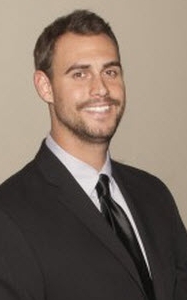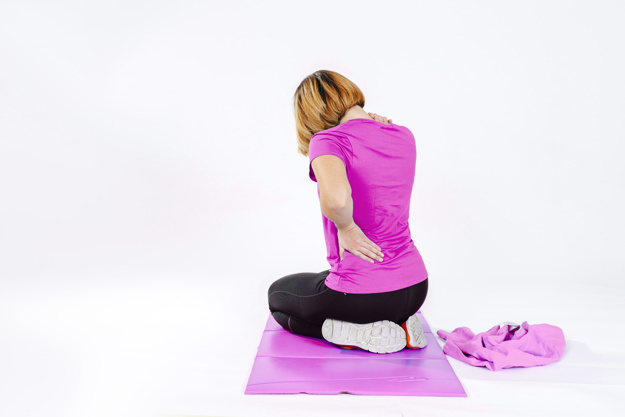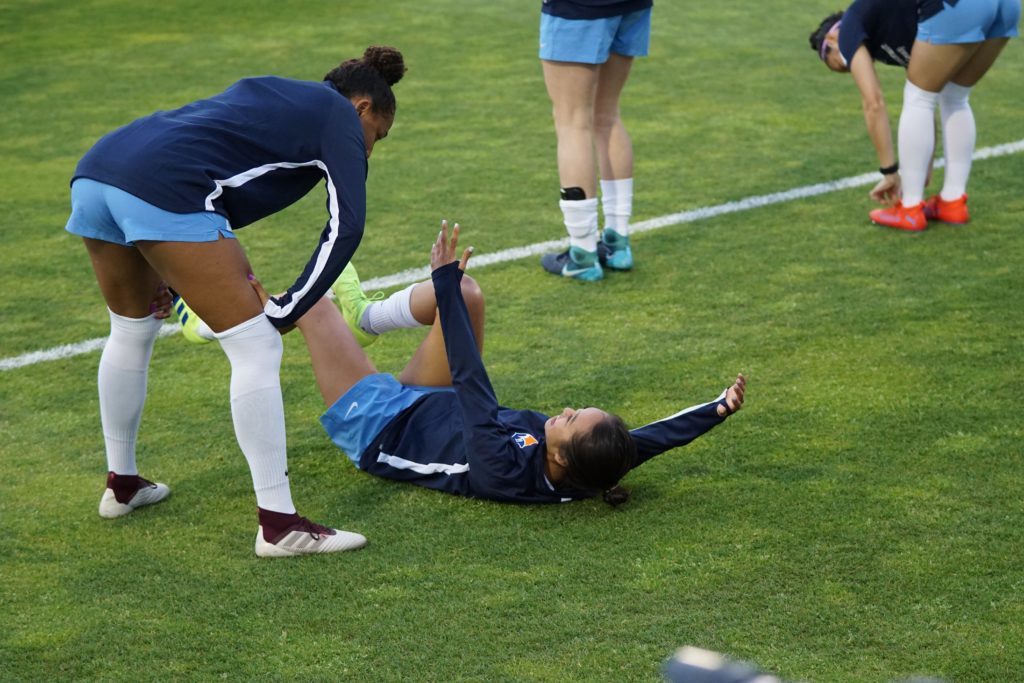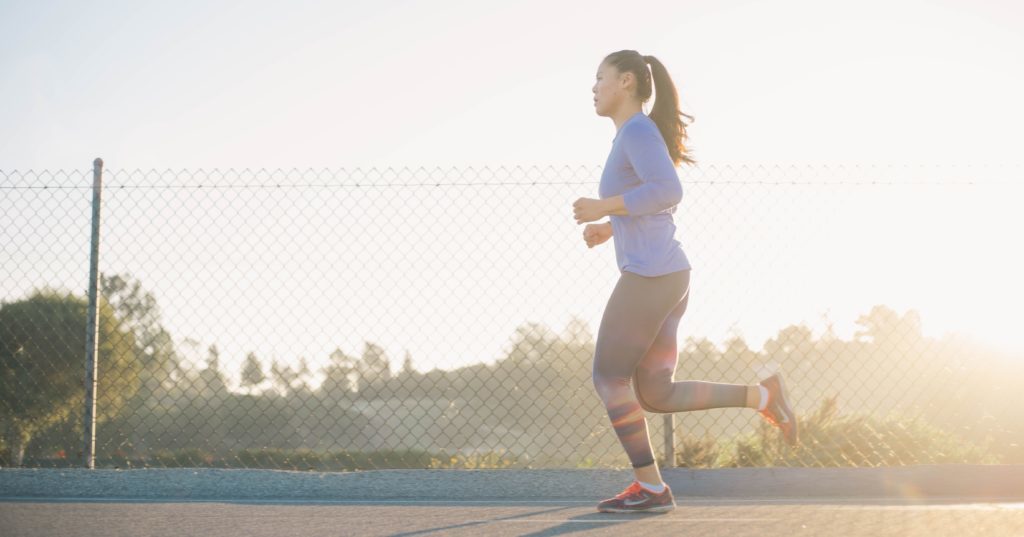Physical Therapy in Smithtown NY
Our manual physical therapists in Smithtown NY and are former Division 1 athletes that understand the toll stress and injury take on your body. They’re also the team physical therapists for the entire sports department at Queens College. We also provide personal training and strength and conditioning with our therapists, who each holds a Doctor of Physical Therapy. Our modern treatment options include state-of-the-art equipment, and you’ll be with your physical therapist for the entire session. We individualize each program to help you recover as quickly as possible.
Physical therapy helps restore function, improve mobility, relieve pain, and prevent or limit permanent physical disabilities. Physical therapy helps re-establish, maintain, and promote overall fitness and health. So stop searching the internet for “physical therapy near me” or “physical therapy in Suffolk County NY” and contact Block Sports Chiropractic and Sports Physical Therapy to get started.
Common Conditions and Treatment for Physical Therapy in Smithtown, NY
Our physical therapists in Smithtown patients with conditions such as low-back pain, arthritis, sports injuries, post-surgical cases, balance and vertigo disorders, neurological disorders, fractures, head injuries, and TMJD (Temporal Mandibular Joint Disorder). Treatments often include skilled manual therapy, individualized programs, and modalities (cold laser, electrical stimulation, moist heat, and cryotherapy). Our mission is to design an individualized program with the most up to date evidence and return you to your normal level of function.
For Physical Therapy in Smithtown NY there is no better team than those at Block Chiropractic and Wellness.
![]()
Derek Silverman, DPT in Smithtown
Dr. Dereck Silverman graduated from Oneonta State College in 2008 with a Bachelor’s degree in Biology. He next earned a Doctorate in Physical Therapy from Sage Graduate School in 2011. Dereck’s clinical interest include manual therapy, sports rehabilitation, and injury prevention.
He is experienced in skilled myofascial release techniques, proprioceptive neuromuscular facilitation, and provides individualized care with specifically designed treatment plans. Dereck has completed multiple courses through Great Lakes Seminars and is working towards CIMT . When not in the clinic treating, Dereck enjoys spending time with his family, participating in Triathlons, making surfboards, and traveling with his wife and daughter.
Continuing Education
Dr. Silverman plans on going for his SFMA Certification AND Continuing Education in Sacroiliac Mobilization in the upcoming year. He has currently taken:
- Great Lakes Seminar: Treatment of Common Extremity Dysfunction Through Mobilization
- Great Lakes Seminar: Functional Strength – An Updated Approach to Exercising our Patients
- Great Lakes Seminar: Mobilization of the Cervical and Thoracic Spine and Ribs
- ROCK TAPE application certified
- Current treatment and management of the Postoperative Knee- ACL (NE seminars)
- JB Myofascial Release and Mobilizations I
- Team Physical Therapist for Queens College
Shannon Jones, DPT in Smithtown
Dr. Shannon Jones first attended Siena College as a student-athlete and graduated in 2013 with a Bachelor’s degree in Biology and minor in Psychology. She then continued to Sage Graduate School, graduating in 2016 with her Doctorate in Physical Therapy. Shannon’s clinical interests are manual therapy, Graston Technique(r), the overhead athlete and overall sports rehabilitation. So if you have been searching the web with questions such as “Graston technique near me”, look no further.
Shannon is currently treating in our Smithtown facility and Queens College. Shannon has completed The McKenzie Institute’s A and B courses for the cervical, thoracic and lumbar spine. She has recently become certified in the application in ROCK Tape. Additionally, she presented her capstone research at New York State Physical Therapy Association’s Conference, which has just been published in the Journal of Aquatic Physical Therapy. In her spare time, Shannon enjoys visiting friends and family, traveling, cheering on the Colts and Yankees and being a dog aunt.
Physical Therapy in Smithtown
(631) 543-0004
Recent Blog Posts
Physical Therapy To Relieve Back Pain

Back pain is a problem that many people have experienced in our modern era. Between all of the strain, we put on our backs from the activities we do to the places we go and even the places we sit; it’s surprising how much our spines can take on a daily basis. Unfortunately, the spine can’t handle all of this stress for long. For many people, back pain can be a frustrating issue that keeps them from participating in their everyday life. If you’ve been searching all over the internet for “chiropractor physical therapy”, “physical therapy near me” and “physical therapy in Suffolk County NY”, look no further because luckily enough at Block Chiropractic Sports and Wellness, our physical therapist in Smithtown can help alleviate your pain or discomfort, and help you prevent such pain in the future!
When trying to alleviate pain or discomfort in your back, our physical therapists recommend stretching to ease the tension and stress that has been impacting the spine. Some of these stretches include:
- Child’s Pose: This stretch is performed during yoga and is done to ease the tension in your lower back.
- Lower-Back Twist: This stretch also helps relieve the tension that can build in the lower-back and your glutes.
- Pelvic Tilt: This stretch allows you to regain some movement in your hips. Your hips tend to tense up with lower back pain, which can result in a loss in mobility.
Now, what about trying to prevent back pain in general? Although numerous solutions exist to alleviate pain, many people are unaware that you can also make plenty of changes at home to prevent back pain or discomfort. Our physical therapist in Smithtown offers fantastic advice when it comes to preventing back pain, including:
- If you’re sitting for an extended duration, make sure you take breaks to stretch.
- Avoid slouching soldiers, try to limit the sessions you spend on your phone or computer.
- Work on good posture, which can help reduce overall strain on your spine.
- Achieving a healthy weight can help reduce the amount of stress placed on your spine.
- Make sure to utilize proper techniques when lifting heavy objects.
If you’re still feeling the aches and pain brought about from back discomfort, talk to our physical therapist in Smithtown NY today to see how we can help you! For more information, please click here!
Physical Therapy For A Torn Meniscus

Meniscus tears are among the most common knee injuries people endure. It can be extremely painful and in some cases, you’ll be required to get surgery. No matter your case’s seriousness, a proper rehabilitation plan is the key to a successful recovery. If you or someone you know has recently suffered a meniscus tear and is in search of pt in Smithtown, NY, we’ve got you covered. At Block Sports Chiropractic & Physical Therapy, our team can help get you back on track after a meniscus tear.
How Did I Injure My Meniscus?
Your meniscus is composed of crescent-shaped structures that allow your knees to absorb any shocks that are incurred. It also allows for proper knee function when comes to bending or straightening it. There are a few different ways you can injure it, including the following:
Trauma from twisting your knee
- Hyperextension
- Degenerative conditions
- I.e. Osteoarthritis
- Wear and tear
How can Physical Therapy Help?
Before rehabbing the injury, you will need to be evaluated to determine if you tore your meniscus. If you have torn it, a doctor will determine how severe of a tear it is and whether or not you will need surgery. A minor meniscus tear’s healing process could take 2-3 weeks. The goal is for you to regain full range of motion in your knee and to regain back the original strength in your injured knee. You will have to be able to run again a full speed and will be required to perform an unassisted squat to determine that the injury is fully healed. Obtaining this goal has a higher success rate if you properly rehabilitate this injury. Contact our physical therapists today!
What Can You Do To Help Your Recovery Process:
If you don’t need surgery, you initially will be told to rest, ice and elevate the injury. You will then be recommended to do a routine course of exercises to help rehab the injury. After that, a physical therapist in Smithtown, NY could recommend some of the following exercises so that you and work on rehabbing the injury at home:
- Heel Slide
- Straight leg raises
- Standing Calf Stretch
- Wall squat with a Ball
- Hamstring Stretch on a Wall
- Restrained Knee Extensions
- Knee Stabilization
- Stepping
If you have recently injured your meniscus and are looking for Physical Therapy in Smithtown NY, contact Block Sports Chiropractic & Physical Therapy!
Physical Therapy for Common Running Injuries

Running is a great form of exercise for those who are looking to lose weight or live a healthy lifestyle. However, not running properly could put a lot of stress on your body and lead to more serious injuries and health conditions. At Block Sports Chiropractic & Physical Therapy, we offer physical therapy in Smithtown NY running injuries and help you prevent them. Physical therapy is capable of providing patients with treatment methods for lower extremity pain. These methods can include recommended stretching techniques, strength training, and suggested warm-up.
Prevention:
For more helpful information on how physical therapy in Smithtown NY can help you prevent running injuries, please consider the following:
- Increase Your Flexibility and Improve Comfort
- Regular stretching routines, especially prior to going for a run, can go a long way towards helping your body prevent itself from injury. It’s recommended to hold each stretch for 30 seconds for the best results.
- Increase strength training
- If your muscles are weak, it can lead to muscle fatigue and negatively affect your performance.
- By having 2-3 strength training sessions per week, that focus on all muscle groups will improve your body and athleticism.
- Stay hydrated and eat well
- Drinking the correct amount of water before running is important to avoid heat exhaustion and dehydration.
- The simple solution is to not overdo the consumption, drink water in small increments so that you do not over hydrate yourself
- Warm up and cool down when running
- It’s important to warm up before running to flush out lactic acid buildup in muscles and prevent delayed muscle soreness.
- Cooling down after running allows your muscles to properly relax for the best results from your run.
- Wear the right shoes
- The right shoe is important because it can protect your foot and ankle from injuries and prevent pain and discomfort. The type of shoe you should wear while running depends on your foot and the amount of running you will be doing.
If you are a runner and want to learn more ways to prevent injuries, we offer physical therapy in Smithtown NY that can help!
Common Injuries:
Running can place a lot of stress on the body. If not done correctly, it can cause injuries such as:
- Runner’s knee
- Achilles tendonitis
- Hamstring issues
- Plantar fasciitis
- Shin splints
- Iliotibial band syndrome
- Stress fracture
If you are interested in learning more about how our physical therapy in Smithtown NY can help you prevent running injuries, contact us today at Block Sports Chiropractic & Physical Therapy!
Are You A Swimmer in Smithtown, NY With Shoulder Pain?

Swimming is one of the oldest sports in the history of athletic competition. It is believed to have began in Europe in the early 1800’s and was included in the first-ever Olympic games in Greece (1896). It has been growing ever since. A study in 2009 explained that swimming was the second most popular sport in the United States in 2008 with approximately 63.5 million participants. In 2013-14, over 20,000 men and women participated in the National Collegiate Athletic Association (NCAA) swimming and diving. It is even a very popular club or recreational sport for weekend warriors. We treat patients various swimming injuries with physical therapy in Smithtown, NY.
Swimming is a beautiful sport in that there are so many ways to implement it and everyone can do it. Swimming can be highly competitive and, as insinuated in the first paragraph, a very popular sport in the Olympics, international competition, and collegiate athletics. Aquatic therapy is a popular and highly supported intervention for elderly rehabilitation and physical therapy for various neurological diagnoses. In fact, our own health care professionals, Shannon Jones, did her capstone research on swimming. She is published in The Journal of Aquatic Physical Therapy for a case report she and three classmates performed. They taught a man with an incomplete spinal cord injury (SCI) how to successfully swim for fitness. This success story and many others are attributed to physical therapy in Smithtown, NY.
The nature of this article is going to focus on competitive swimming or those swimming for triathlons or fitness. We will not discuss its role in neurological or elderly populations.
Range of motion and strength needed for swimming:
Swimming form is outside the scope of this blog. We gratefully admit there are highly skilled and knowledgeable coaches and trainers to teach and discuss the proper form of swimming. However, from rehab or preventative standpoint, it is important to discuss what your body needs and requires to swim properly. Physical therapy in Smithtown, NY will allow your body to perform proper movements for swimming. We will discuss only the Freestyle stroke at this time due to its popularity in competition and triathlons. However, contact our Selden or Smithtown, NY offices to discuss additional strokes with our staff members as needed.
During the freestyle stroke, full range of motion of several joints are required. Let us begin at the most crucial task of swimming – breathing. In order to breathe efficiently, the athlete must be able to rotate their neck and body (cervical and thoracic rotation). Full shoulder flexion and rotation is needed to bring that arm overhead and into the water in the correct direction. After flexion, full extension is then needed to propel the arm through the water to finish the stroke. Full motion at the elbow and wrist/hand are also required for the upper extremity phases of the freestyle stroke. While all this motion is happening throughout the upper extremity, the shoulder blade must also be able to contribute to successfully complete this stroke. It needs to be able to upward rotate, tilt posteriorly and externally rotate. Additionally, the lower extremity also has a grueling task for the freestyle. The hip must have full extension and the knee and ankle joints must have adequate flexion and extension for the kick propulsion.
In regards to muscle strength, shoulder rotator cuff and leg extension/flexion strength are obvious necessities for the freestyle. Other areas that are often overlooked are scapular stabilizers and thoracic extensors and rotators. These play a crucial role in preventing injuries and allowing the shoulder to function efficiently and safely. If the shoulder blade is unable to properly move, the shoulder is compressed and out of alignment, causing muscles to become overused and irritated. Additionally, if thoracic extension or rotation is not present and/or weak, the shoulder must try to overcompensate as well, again leaving is prone to injury.
Finally, proprioception is required to properly complete this stroke as well. Proprioception is the body’s sense of position in space. For example, correctly knowing that your shoulder is at 120 degrees of shoulder flexion. Without proper position sense, your alignment will be incorrect and cause insufficient mechanics. If you have suffered from a swimming injury and are in need of care you should seek the help of physical therapy in Smithtown, NY.
Common injuries:
There is ample evidence-based research explaining why swimmers are highly susceptible to shoulder injury. The shoulder injury is the most common complaint of competitive swimmers. In a study by de Almeida et al. (2015), 60% of 257 swimmers in the Brazilian Swimming Championship reported at least one musculoskeletal injury in the past 12 months. The same authors explained other studies that report 4-5.5 injuries per 1,000 NCAA swimmers and 66 injuries per 1,000 swimmers in the World Swimming Championship. We are attentive to sports care with our physical therapy in Smithtown, NY.
The most prevalent injury in swimmers is tendinopathy, most often to the Supraspinatus – a major rotator cuff muscle responsible for internal rotation of the shoulder. Supraspinatus tendinopathy is one of the most common overuse injury in young overhead athletes, aside for “Little League Elbow” in baseball players. This injury and others can be treated with assistant associate physical therapy in Smithtown, NY.
Other shoulder injuries responsible for painful shoulder in swimmers include scapular dyskinesis (poor shoulder blade control or movement), instability and impingement. It is important for the athlete to understand the symptoms of pain and injury. A study by Hibberd and Myers (2013), explained that a large number of club swimmers believed pain to be a normal consequence of swimming and that pain medication is an adequate solution. This is NOT THE CASE. Pain is never a normal response to athletic competition or training. Muscle soreness can be common, especially for a few days after participation. However, PAIN is never a normal response. We can help with pain management with physical therapy in Smithtown, NY.
Common symptoms:
Rotator Cuff Dysfunction (tendinopathy or impingement):
- Onset – gradual worsening, overuse
- Pain/tenderness – outside edge of the shoulder
- Range of motion –
- Tendinopathy –
- Pain with active movement; decreased pain with passive movement
- Full passive range typically present
- Impingement –
- Pain with both active and passive movement
- Full range is often present. However, debilitate pain is often experienced throughout the entire or partial range
- Tendinopathy –
- Strength – full strength is typically present, however, testing may reproduce pain
Rotator Cuff Tear –
- Onset – a typically acute, traumatic event
- However, it can be chronic with a long history of overuse and shoulder stress
- Pain/tenderness – pain in the lateral shoulder
- pain may be present at rest and at night
- Range of motion –
- Limited active range due to weakness and pain
- Typically full passive movement present, which may or may not be painful
- Strength – SEVERE weakness
Common causes for injury:
As stated previously, there is ample evidence on shoulder injuries in the swimming population. Several articles look deeper into this issue and have explained common impairments that leave the swimming shoulder susceptible to injury. We can help treat shoulder injuries with physical therapy in Smithtown, NY.
- Scapular dyskinesia is often underrated in the general population. Medical professionals are highly trained in screening for shoulder blade weakness or hypomobility, however, the common person is not highly educated on its importance of shoulder movement. It is VERY important to understand that the shoulder blade movement is essential for a healthy shoulder. In fact, it is responsible for at least 1/3 of overhead movement. Research has explained its importance in swimming form. In order to keep the glenohumeral joint (shoulder ball-in-socket joint) in ideal alignment during the swimming stroke, the shoulder blade must upwardly rotate, posteriorly tilt and externally rotate. A study performed by Serenze et al. (2018) looked at the fatigued shoulder. The authors found that the serratus anterior (major scapular stabilizer) is recruited poorly in a tired shoulder. This leads to overcompensation of the lower trapezius (another major stabilizer) which in turn causes excessive anterior tilt and internal rotation. When this happens, the already small space in the shoulder for muscles to run through is compressed further, resulting in tendon irritation and tendinopathy.
- Decreased shoulder arc of motion is another common reason for a shoulder injury. Most commonly, an increase in external rotation along with decreased internal rotation is a likely adaptation to the overhead athlete’s shoulder. When this happens, certain muscles are unable to be used efficiently, leading to injury. Just think, internal rotation is crucial when the arm passes through the water to propel the body. The better that phase of swimming, the speedier you can be. If poor motion is available, the likelihood of swimming fast decreases.
- Instability in one or more directions will cause the shoulder to move in excessive directions during the swimming stroke. When instability is present, the glenohumeral joint is allowed to flail around in response to the water currents present. This will again put certain muscles into a compensatory action, leading to overuse and injury. Scapular instability is often present too, meaning that when the shoulder is moving through the range, the shoulder blade is unable to maintain good, strong positioning. When this happens, similar conditions explained in the dyskinesis paragraph can occur.
- Pectoral tightness is common in not only swimmers but much of the general population. Have you seen a 16-year-old hunched over their cellphone, or a 45-year-old secretary staring hard into their computer screen? Swimmers often have very rounded shoulders and an increase in thoracic kyphosis (looks like a mid-back hump). In response to this, pectoral muscles are often shortened. When this adaptation is present, it is very difficult for the shoulder blades to act properly, leading to shoulder malpositioning and eventually shoulder injury.
- Overtraining or poor training will likely lead to injury as well. We all believe the “no pain, no gain” and “train harder” quotes. This motivates us to google a bunch of random exercises and go to the gym every day to get stronger. However, training the shoulder TOO MUCH, on top of participating in the competition, can cause more bad than good. Additionally, if your program is not targeting the proper areas, you can cause more harm or, even worse, completely waste your time. It is important to have a sports-specific and individualized strength, mobility and stability program in order to protect the shoulder from the high demands of swimming.
How Can Physical Therapy Smithtown NY Clinic Help You?
When An Injury Does Occur:
- If you find yourself experiencing pain with swimming, please contact one of our offices. We are located in Smithtown, NY and have physical therapists and chiropractors highly trained in sports rehabilitation. Anyone of our experienced providers will perform a thorough examination and prepare a proper plan of care likely consisting of skilled manual therapy techniques and therapeutic intervention.
- Resting and allowing your body to heal properly when an injury occurs is important. Do not be angry at this, it is common with high-level sports participation to experience injury. However, if you push yourself too hard with injury, you can cause more severe damage or a new injury that may lead you to be out longer, if not forever. So GO GET LOOKED AT and LET YOUR BODY HEAL! Our experienced team will use physical therapy in Smithtown, NY to allow you to recover.
Preventative training:
By visiting or contacting one of our clinics, we can help you be proactive and prevent shoulder injury. This will keep you in the competition longer and help improve your performance to the next level. Outlined below are just a few of the ways WE CAN HELP YOU:
- FMS or SFMA screening – Please see one of our previous posts on the Selective Functional Movement Screen (SFMA). This, along with the FMS, allows us to find underlying strength, range of motion, flexibility and proprioceptive deficits in you or an athlete you know. We can create an INDIVIDUALIZED and SPORTS-SPECIFIC program for you by performing this screen. We will then monitor your progress and can continue to provide you with proper progressions or alternatives.
- Social Media – We are very active on all platforms of social media – Instagram, Twitter, and Facebook. Our Instagram and Twitter handle are Blockwellness and our Facebook pages include A) Block Chiropractic and Sports Physical Therapy in Smithtown, NY and B) Block Chiropractic and Sports Physical Therapy in Smithtown, NY. Additionally, we have a google website you can access simply by googling Block Chiropractic and Sports Physical Therapy. On all platforms, we post various teaching moments, motivation messages and that may help you or your athlete.
Our physical therapists have already done significant research on swimming and common injuries and pathologies. We have created a general prevention program for all overhead athletes that will benefit our competitive and recreational swimmers. Our program consists of exercises for 1) shoulder mobility 2) rotator cuff strengthening 3) scapular stabilization 4) core strength 5) spinal mobility. We have taken the most common impairments and underlying issues and found the best exercises to address these. We can promise improved strength, motion, and performance with compliance with this program. Please stop by and talk to one of our physical therapists in our Smithtown, NY offices to learn about our program.
In conclusion:
To sum up this post, swimming is a very common sport in this day in age. With this comes competition and increased demand to perform well. As a result, athletes are training harder and trying to find different ways to improve performance. However, without proper education and intervention, this can lead to overuse of injury. Our experienced sports chiropractors and physical therapists can help you stay in the game longer and increase your level of play. Our skilled chiropractors have 20+ years treating collegiate level swimmers and successfully rehabbing them to health. We have done all the work for you. Stop googling and stop by our office and get the right program for your swimming shoulder. Contact us today if you seek physical therapy in Smithtown, NY to allow our team to help you recover from a swimming injury.
ACL Reconstruction: How Physical Therapy can help

ACL reconstruction surgery reconstructs the ligament located in the knee’s center. Also known as the anterior cruciate ligament, the ACL connects the thigh bone to the shin. An ACL tear commonly occurs in sports that require a lot of physical movements, such as soccer or basketball. While ACL reconstruction surgery can certainly help your injury situation, getting properly rehabilitated is just as important. The difference between a good and bad recovery process can mean the possibility of re-injury. That’s why at Block Chiropractic Sports & Wellness providing physical Therapy in Smithtown NY and Selden, we’re dedicated to helping you with your recovery process.
How Physical Therapy Will Help
A trained physical therapist will be able to bring you through a series of different exercises and training to improve your condition and recovery time:
-
- Weight balance – after your surgery, you will be put on crutches to allow some weight off your recovering knee. Depending on the type of surgery received, your therapist will be able to give you a timetable of how long you will be on crutches.
- Movement exercises –in order to regain motion around your knee, your physical therapist will guide you through some gentle exercises that you can do at home and at your appointments.
- Icing/Compression – immediately following surgery, you will be told to use ice and compress against the injured leg in order to reduce pain and swelling.
- Strength exercises – a month following surgery, your therapist will begin to build back strength in your leg. Exercises ranging from non-weight to weight-bearing will slowly strengthen the new ACL and how much pressure it can support.
If you’re looking for physical therapy in Smithtown, Block Chiropractic Sports & Wellness is the clear answer. Since ACL tears should never be taken lightly, our trained staff will work through your injury to ensure you’re 100 percent recovered. For more information, contact us today!
Contact Block Sports Chiropractic & Physical Therapy in Smithtown NY:
Dr. Jeffrey Block founded Block Sports Chiropractic & Physical Therapy in Smithtown NY in 1993. His brother, Dr. Richard Block now works in this location. The practitioners at both locations are trained in different areas and provide a range of complementary services for our community including physical therapy and massage therapy.
Located at:
301 Maple Ave.
Smithtown, NY 11787
Phone: (631) 543-0004
Helping People in Smithtown Find Relief
Smithtown, NY, is home to many healthcare professionals specializing in various patient care areas. If you’re looking for the best physical therapy experience in Smithtown, you’ve come to the right place. Whether you’re recovering from orthopedic surgery or looking to improve your range of motion and flexibility, a physical therapy Smithtown NY can help you live a pain free life and improve your overall health. The physical therapy experience at a therapy office in Smithtown is designed to be compassionate and welcoming. From the front desk to the physical therapists, every patient is treated with the highest level of care and attention to detail. Physical therapists specialize in a range of treatments, including pain treatment, sciatica, and gait disorders.
At the physical therapy clinic in Smithtown, patients can expect an extremely knowledgeable staff who customize and personalize their services to meet each patient’s unique needs. With a one-on-one approach, patients can work hard and see amazing results in just a couple of months. Many patients have seen a complete recovery and are back on the field or enjoying everyday activities. The physical therapy clinic in Smithtown is located in Long Island and serves the surrounding areas. Patients who visit the clinic can expect a welcoming environment where they can comfortably receive the care they need to improve their quality of life. Physical therapists specialize in debilitative conditions and may even prevent the need for surgical intervention in some cases.
Overall, the physical therapy experience in Smithtown is absolutely amazing. Patients can trust that they are in good hands with a licensed, compassionate, and dedicated staff that provide services the highest level of patient care. Physical therapists work hard to help patients achieve their goals and live pain-free life, all while improving their overall health. In conclusion, if you’re looking for the best physical therapy experience in Smithtown, look no further than the physical therapy clinic in Smithtown, NY. The physical therapists specialize in a range of treatments, including pain treatment, sciatica, and gait disorders, and provide customized and personalized services to each patient. With a one-on-one approach, patients can expect amazing results in just a couple of months and improve their quality of life. Physical therapy at our Smithtown location is dedicated to providing the highest level of patient care and ensuring that every patient is treated with compassion and attention to detail.





